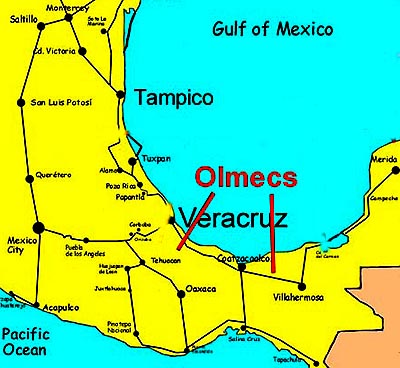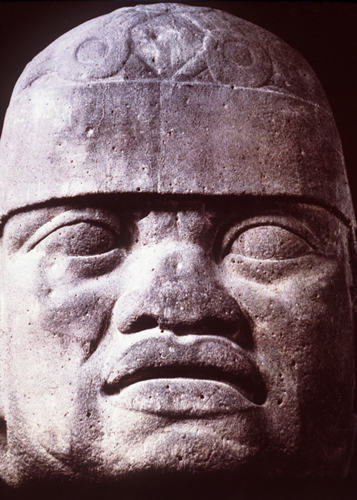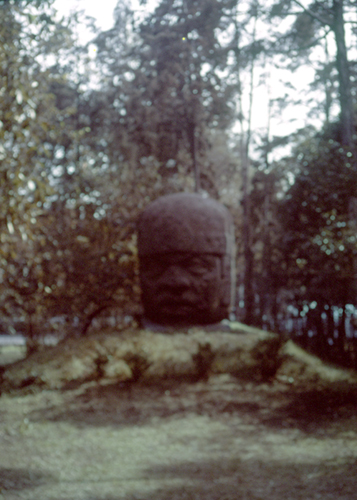Olmec Zone Notes
1400 BCE – 300 BCE
 |
|---|
I. 1400 BCE – 300 BCE
The Olmec civilization (olmecas) is the pre-Columbian, pre-Maya, pre-Aztec "Mother culture" of Mesoamerica. The Olmecs were either (1) a civilization that disappeared completely or (2) the ancestors of later inhabitants. The oldest Olmec artifacts (i.e., cultural objects) date to 1400 BCE. They are found at La Venta and Tres Zapotes. The Olmec people lived in the coastal lowlands of south-central Mexico (today's regions around Veracruz and Tabasco on the Tehuantepec Isthmus.
II. Typical Olmeca artifacts
A. Megalithic statues (large stone statues) in the form of helmeted heads. They seem to show a "masculine ideal" (i.e., they are not "realistic"; they are stylized, they all look the same). They have "oriental"-shaped eyes and a "jaguar" mouth, which is turned down at the corners.
B.
III. Two photos of Olmeca heads at the Museo Nacional de Antropología de México in México City
 |
 |
|---|---|
| This is a closeup photo of an Olmeca stone head which WTL took ten years ago inside the MNAM. Notice the stylized features of this helmeted Olmeca male. | This (bad) photo was taken by WTL many years ago outside the main buildings of the MNAM. It shows the relative size of the large stone sculptures of Olmeca heads. |

